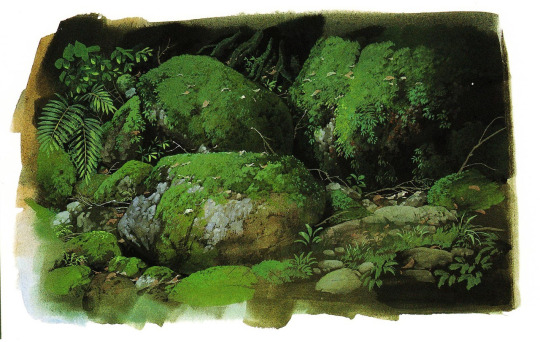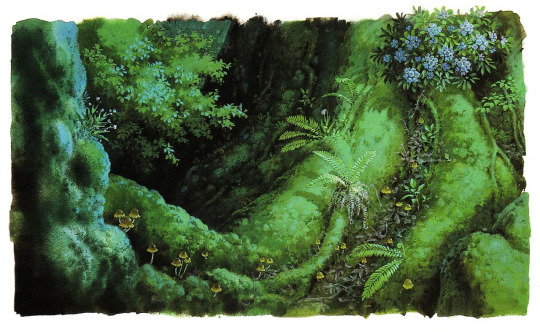Text

It's Tell a Friend Friday! Please enjoy this picture of Atlantic camas (Camassia scilloides) I found in Missouri.
Then tell someone you know about my work–you can reblog this post, or send it to someone you think may be interested in my natural history writing, classes, and tours, as well as my upcoming book, The Everyday Naturalist: How to Identify Animals, Plants, and Fungi Wherever You Go. Here’s where I can be found online:
Website - http://www.rebeccalexa.com
Rebecca Lexa, Naturalist Facebook Page – https://www.facebook.com/rebeccalexanaturalist
Tumblr Profile – http://rebeccathenaturalist.tumblr.com
BlueSky Profile - https://bsky.app/profile/rebeccanaturalist.bsky.social
Twitter Profile – http://www.twitter.com/rebecca_lexa
Instagram Profile – https://www.instagram.com/rebeccathenaturalist/
LinkedIn Profile – http://www.linkedin.com/in/rebeccalexanaturalist
iNaturalist Profile – https://www.inaturalist.org/people/rebeccalexa
Finally, if you like what I’m doing here, you can give me a tip at http://ko-fi.com/rebeccathenaturalist
#Tell a Friend Friday#camas#wildflowers#native wildflowers#native plants#plants#flowers#ecology#botany#nature#nature photography#Missouri#Ozarks#naturalist
6 notes
·
View notes
Text

I miss storms.
Growing up in the Midwest, I was scared of them. Tornado drills in school from a young age brought home the fact that one of these destructive maelstroms could come through and wipe an entire town off the map in minutes. Twister came out when I was in high school, fueling both fascination and fear when we watched it in a science class so we could pick apart the fact and fiction. And I was terrified of getting caught out in one if I had walked too far from home, and up from the southwest came dark clouds, wind, and a growl of thunder in the distance. Yet I also felt security as the winds blew around the house, tucked into my bed in the dark; so long as a tornado didn't snake down from the sky, I could rest amid the thunder and lightning, watching the trees blown back and forth by the wind.
But when I moved to the Pacific Northwest in 2006, I found after a few years that I began to miss them. It wasn't just that their relative infrequency had defanged them. Rather, I found that the part of me that curled up while the wind howled and the sky rumbled missed the feeling of safety amid the chaos. Sure, there was always the chance that factors would align to bring a powerful spiraling juggernaut racing across the land, but the vast majority of the time things passed without incident, other than perhaps a few small branches and leaves washed into the storm drain by a sudden torrent.
The few true thunderstorms that raged when I lived in Portland, and then on the coast, became special occasions. Unless I was absolutely uninterruptible, I would stop whatever I was doing, turn off the lights if it was dark, and bear silent witness to the passing of the flashes of light and their resultant chorus. Sometimes there would be no more than one or two distant disturbances to the south or the north; other times we would get a few minutes that almost--but not quite--felt like being back in the Ozarks on a muggy summer evening. These times became so special to me that if my partner were awake later than I was as was often the case, and a storm rolled in, he would gently wake me and sit with me while we enjoyed the show together, before I drifted back to sleep.
So now that I come back here a couple of times a year, I always hope that there will be a storm or two. And as I write this, the southern edge of a storm brushes past Rolla, following I-44 toward St. Louis. It's not an especially wild beast here; the leaves barely move, the rain drops sluggishly, and the thunder only occasionally speaks a ways away. But I am curled up in my old bedroom, blinds open to watch the lightning flash, listening to spatters against the windows.
#lightning#thunder#storms#thunderstorms#weather#rain#nature writing#nature#writing#Missouri#Ozarks#Midwest#Pacific Northwest
16 notes
·
View notes
Text

White-tailed skimmer
By: Vicky McMillan
From: Natural History Magazine
1984
56 notes
·
View notes
Photo
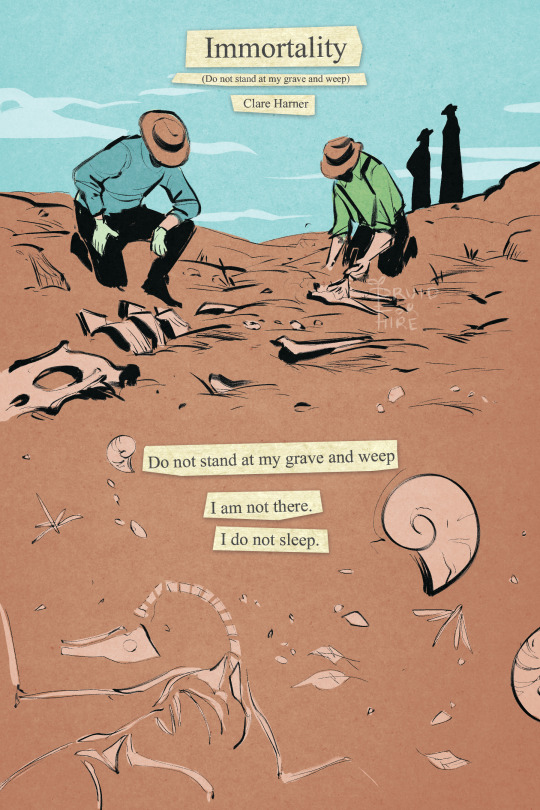

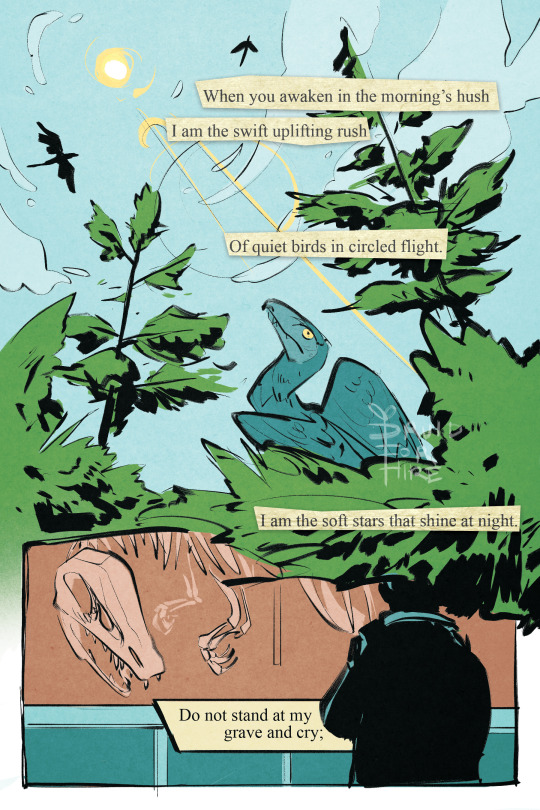
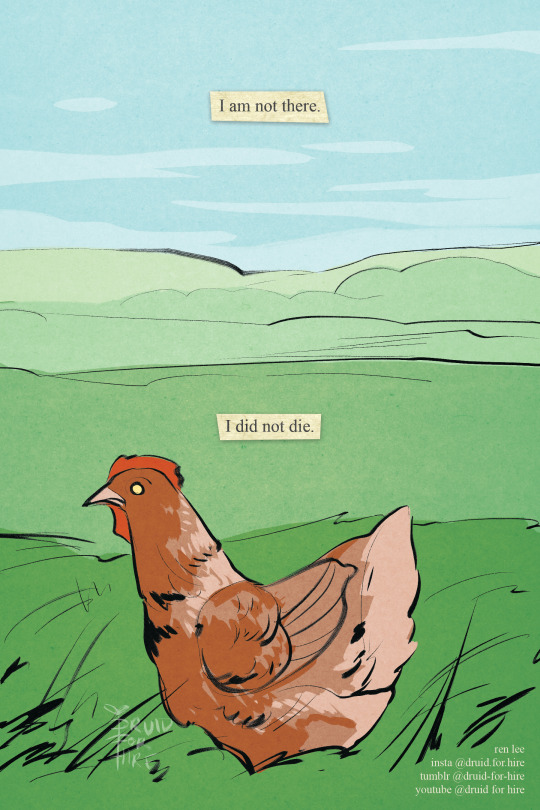
[image id: a four-page comic. it is titled “immortality” after the poem by clare harner (more popularly known as “do not stand at my grave and weep”). the first page shows paleontologists digging up fossils at a dig. it reads, “do not stand at my grave and weep. i am not there. i do not sleep.” page two features several prehistoric creatures living in the wild. not featured but notable, each have modern descendants: horses, cetaceans, horsetail plants, and crocodilians. it reads, “i am a thousand winds that blow. i am the diamond glints on snow. i am the sunlight on ripened grain. i am the gentle autumn rain.” the third page shows archaeopteryx in the treetops and the skies, then a modern museum-goer reading the placard on a fossil display. it reads, “when you awaken in the morning’s hush, i am the swift uplifting rush, of quiet birds in circled flight. i am the soft stars that shine at night. do not stand at my grave and cry.” the fourth page shows a chicken in a field. it reads, “i am not there. i did not die” / end id]
a comic i made in about 15 hours for my school’s comic anthology. the theme was “evolution”
146K notes
·
View notes
Text
Mysterious moth unseen for 65 years accidentally rediscovered by tourist
736 notes
·
View notes
Text
Just a reminder that while prehistoric fish are cool, there are plenty of neat babies still around!

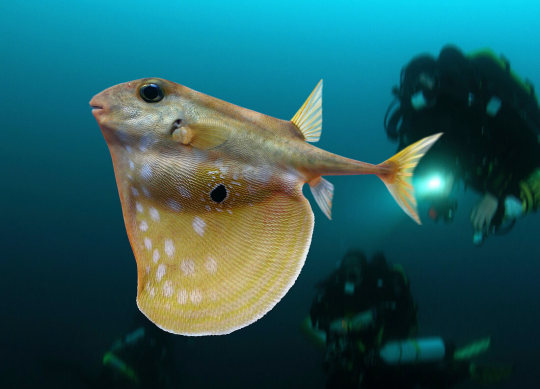



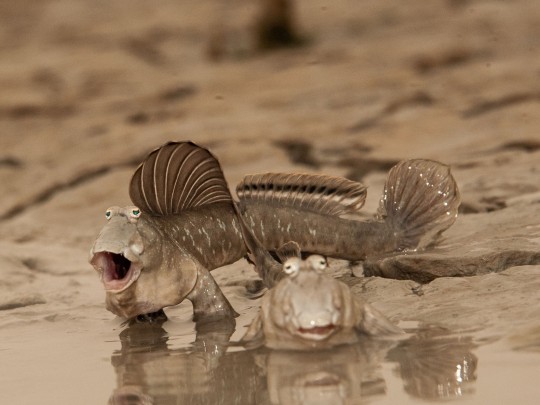
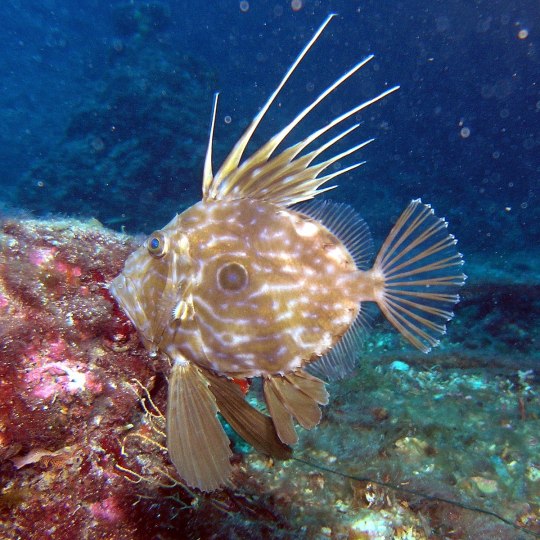
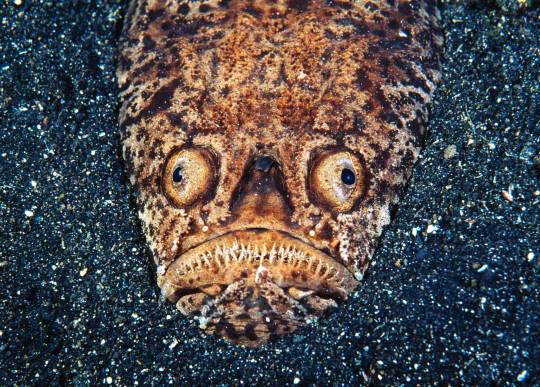

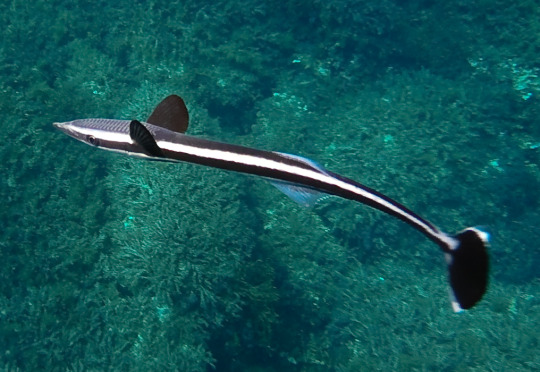
4K notes
·
View notes
Text
Im fucking sobbing looking at the new black footed cat at Utah's Hogle zoo
Shes just a fucking baby

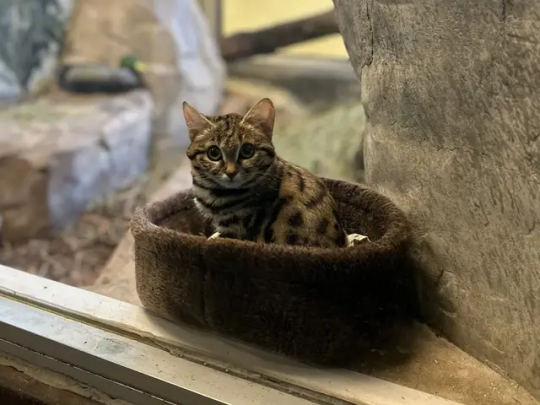
Baby with a 60% successful kill rate
50K notes
·
View notes
Text
Posting due to an emergency- please share widely if you're local to Chicagoland.
If anyone in the Chicagoland area sees this, a friend's service dog prospect is in need of immediate boarding from tomorrow until May 6. Winnie is about 40 pounds and is not dog-reactive at all, but the person caring for her was hospitalized and so my buddy is looking for a short term emergency foster!
I'm available to help with any transportation (you wouldn't need to drive her anywhere!) and compensation+coverage for food/medical/etc. would be involved. You wouldn't need to pay for her stuff, just make sure she has a place to stay and walk her and call me if she needs to go to the vet.
If this is something you or someone you know could help with, please let me know. It's an emergency situation, so for the first time in... well over a year, I am opening my inbox in case this is something you can help with. Please DM me if you or anyone you know can help.
782 notes
·
View notes
Note
Bizarre question for worldbuilding: what kind of fungus would be best at interfacing with electronics? Whether that be actively picking up and transmitting signals or just wiring itself into a keyboard and manipulating it that way; it's a librarian, so I don't have to be picky. I was thinking a cordyceps, but if you have better ideas, I am all (wood) ears!
@specsthespectraldragon Honestly, I think any mycorrhizal fungus would work. The mycorrhizal network of fungal mycelium is already thought to function as a communication network among trees and other plants (though to what degree is debatable.) The signals in a mycorrhizae are chemical rather than electric; there's some evidence for plants sending electrical signals, but I believe that's largely between different parts of one plant rather than among multiple individuals.
Of course, you're working within a fictional setting, so feel free to mess about with this as much as you want. If your world's scientists have discovered that plants evolved ways to extend their electrical signalling capabilities to the mycorrhizae through the fungal mycelium, I think that would be a perfectly reasonable bit of science fiction to toss in there.
Good luck with your project; it sounds like a lot of fun!
#specsthespectraldragon#fungi#mushrooms#mycorrhizae#mycelium#fungus#nature#writing#fiction#worldbuilding
16 notes
·
View notes
Text
Okay. This is a pretty big deal in the world of mycology. Historically fungi have been divided up into either parasites that siphon resources from plants, mutualists that cooperate with them, or saprotrophs that break down decaying organic matter (plant and otherwise.) The genus in question, Mycena, has traditionally been made of saprotrophic species feeding on decaying wood.
However, what scientists are observing is Mycena fungi displaying primitive mutualistic behaviors, specifically providing living plants with nitrogen and getting carbon in return from a living partner, or getting to chow down on the plant's remains once deceased. This shows a significant level of adaptability that hasn't been observed in fungi beforehand, though given how much we don't know about fungi there's a good possibility this isn't an unprecedented event.
It doesn't surprise me one bit that we're seeing this in Mycena. These fungi are especially opportunistic; in fact, that mushroom growing out of a frog's skin that we saw a while back was also a Mycena species. Perhaps we need to add bonnet mushrooms to raccoons, dandelions, and other hardy generalists as symbols of scrappy survival in spite of environmental pressures.
405 notes
·
View notes
Photo

Africa is full of bats, but their fossils are scarce – why these rare records matter
Although Africa is home to many species of bats, their essential fossilized remains for paleontologists are notably sparse.
https://www.modernghana.com/news/1306249/africa-is-full-of-bats-but-their-fossils-are-scar.html
15 notes
·
View notes
Photo
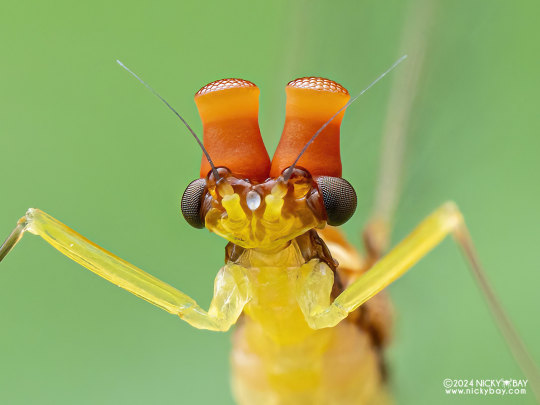



Male small mayfly, Baetinae, Baetidae
Male small mayflies in the family Baetidae differ from females in that they have seven eyes rather than five - 3 simple eyes, 2 compound eyes,and 2 turbinate eyes on top of the head. These upward-facing eyes are thought to be used for spotting females during aerial mating.
Photographed in Malaysia by Nicky Bay // Website // Facebook
Shared with permission; do not remove credit or re-post!
2K notes
·
View notes
Text

Sigrid Granfelt (Finnish, 1868-1942) - Reposing Dog
703 notes
·
View notes
Text
some loser: humans are innately selfish creatures
my psych book:
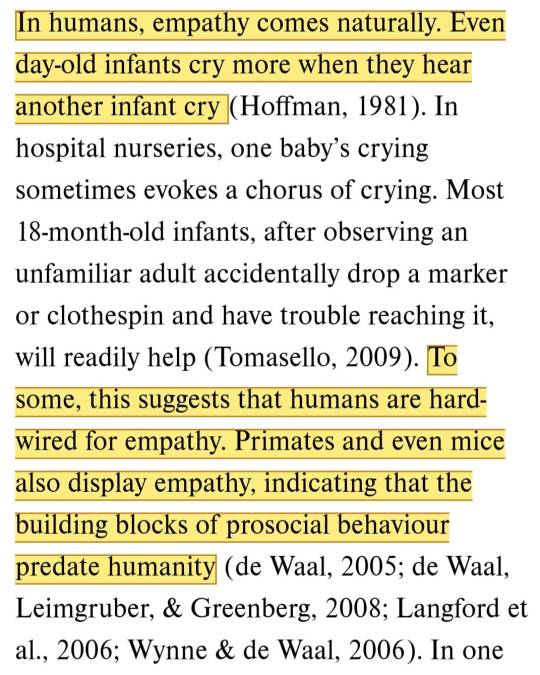
48K notes
·
View notes
